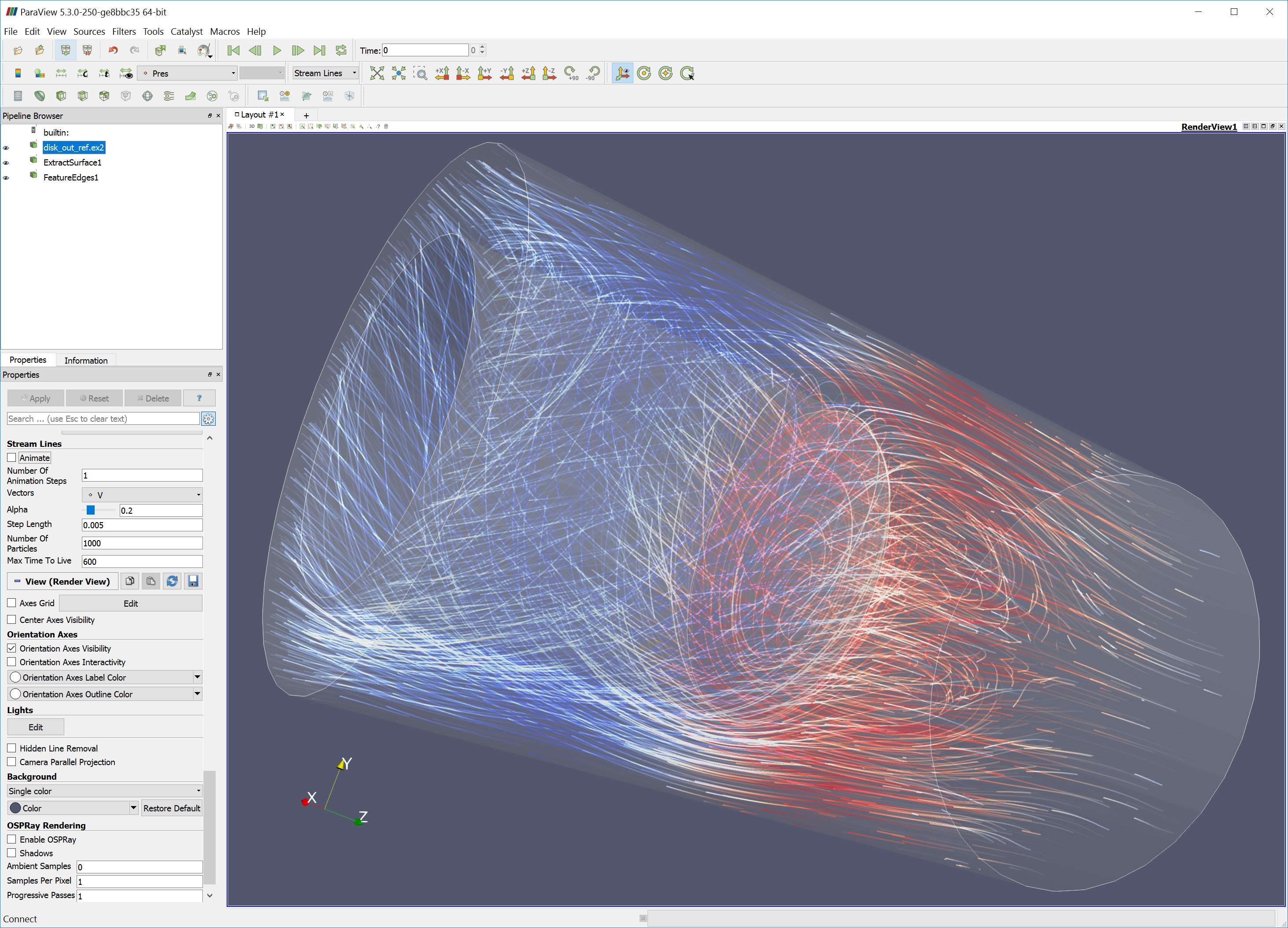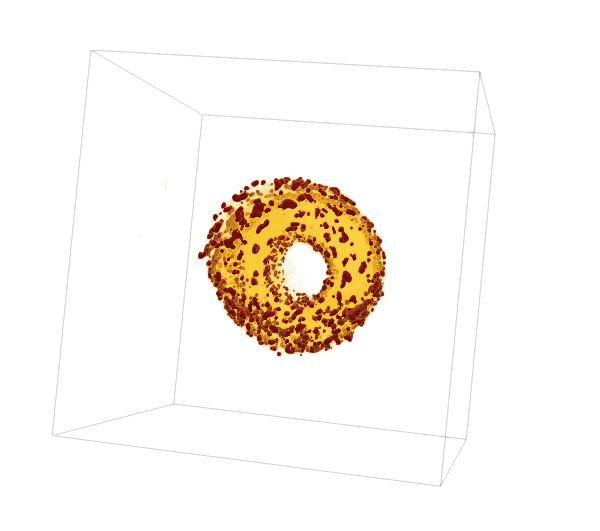Recent Releases

Kitware and Collaborators Make 1.0 Release of Materials Tomography Platform
Kitware worked with researchers to make the first major release of Tomviz, an open-source platform that processes data for materials tomography. Tomviz aligns, reconstructs, segments, visualizes, and analyzes three-dimensional tomographic data through a reproducible pipeline.
The release followed the conclusion of Phase II of a Department of Energy Small Business Innovation Research project. For the project, Kitware partnered with Cornell University and collaborated with members of other academic institutions to develop a multithreaded application architecture and an extensive Python environment in the platform.
“We created a responsive, graphical solution that processes and analyzes complex scientific data in a manner that may otherwise span multiple applications and programming environments,” said Marcus Hanwell, a technical leader at Kitware. Hanwell is a member of the Tomviz development team who served as the principal investigator on the project.

Tomviz comes ready for download as open-source binaries for major operating systems like Windows, macOS, and Linux. To begin the pipeline, Tomviz imports projection images from transmission electron microscopes in industry-standard file formats such as Tagged Image File Format (TIFF), Medical Research Council (MRC), and Electron Microscopy Datasets (EMD). While the platform can automatically align these images, it enables users to manually adjust the tilt and rotation of the axis.
“Throughout the pipeline, Tomviz remains highly interactive,” said Robert Hovden, a former postdoctoral researcher at Cornell University and a founder of the Tomviz development team. “Tomviz runs data operators in background threads, so users can continue to work with the platform while it executes operations.”
The platform builds on the capabilities of the Insight Segmentation and Registration Toolkit, the Visualization Toolkit, and ParaView. Through hardware-accelerated rendering techniques, for example, Tomviz lets users alter visualization parameters such as the opacity, lighting, color, and orientation of volumes and geometries. Tomviz not only provides different rendering modes, but it contains multiple tools for analysis. One tool, a ruler, measures the lengths of objects in images. Tomviz also computes surface area, volume, and other labeled object attributes, which it displays in a spreadsheet that users can save.
In addition to tabular data, Tomviz allows users to save its state with all data pipeline settings. Users can share and modify these settings to help others follow the necessary steps to reproduce results. Tomviz saves results as movies or exports them on the web as HTML files. To foster open dissemination, the Tomviz development team made live examples publicly available on GitHub. These examples utilize images or the latest Web Graphics Library (WebGL) rendering techniques.
This material is based upon work supported by the Department of Energy under Office of Science Award Number DE-SC0011385. This report was prepared as an account of work sponsored by an agency of the United States Government. Neither the United States Government nor any agency thereof, nor any of their employees, makes any warranty, express or implied, or assumes any legal liability or responsibility for the accuracy, completeness, or usefulness of any information, apparatus, product, or process disclosed, or represents that its use would not infringe privately owned rights. Reference herein to any specific commercial product, process, or service by trade name, trademark, manufacturer, or otherwise does not necessarily constitute or imply its endorsement, recommendation, or favoring by the United States Government or any agency thereof. The views and opinions of authors expressed herein do not necessarily state or reflect those of the United States Government or any agency thereof.
CMake Ups Support for CUDA, CSHarp, and C++
Kitware released version 3.8 of its open-source solution for cross-platform software development, CMake. The release upgraded support for CUDA, CSharp (C#), and C++, promoting both CUDA and C# to first-class programming languages. Likewise, the release further simplified project compilation with the addition of C++11, C++14, and C++17 target-based feature flags. These flags extend the existing target_compile_features command. Kitware published detailed notes on CMake 3.8 on its blog at https://blog.kitware.com/cmake-3-8-0-available-for-download. To download CMake, please visit https://cmake.org/download.
ParaView Gets More Animated
The ParaView 5.3 release included new plug-ins. One plug-in, VTKmFilters, adjusts the gradient, contours, and details in visualizations on many-core systems. Another plug-in, StreamLinesRepresentation, animates streamlines.

To reduce aliasing artifacts when ParaView renders lines, wireframes, etc., the release turned on the Fast Approximate Anti-Aliasing (FXAA) algorithm by default. The release also updated the integration of ParaView and OSPRay through support for OSPRay 1.1.2. For more information, please visit https://blog.kitware.com/paraview-5-3-0-release-notes.
Girder 2.2 Tunes Data Management
Girder 2.2 became available as open-source software. The release polished the user interface on the administrative configuration page. It also presented a file-like interface for files in Girder assetstores. In addition, the release augmented support for file formats in the DICOM viewer plug-in, it built in support for Box as an Open Authorization (OAuth) provider, it incorporated support for static-only dependencies between plug-ins for web client code, it introduced a mode that boosts upload performance, and it refined download performance in the Secure File Transfer Protocol (SFTP) server. To download Girder, please go to https://github.com/girder/girder/releases/tag/v2.2.0.